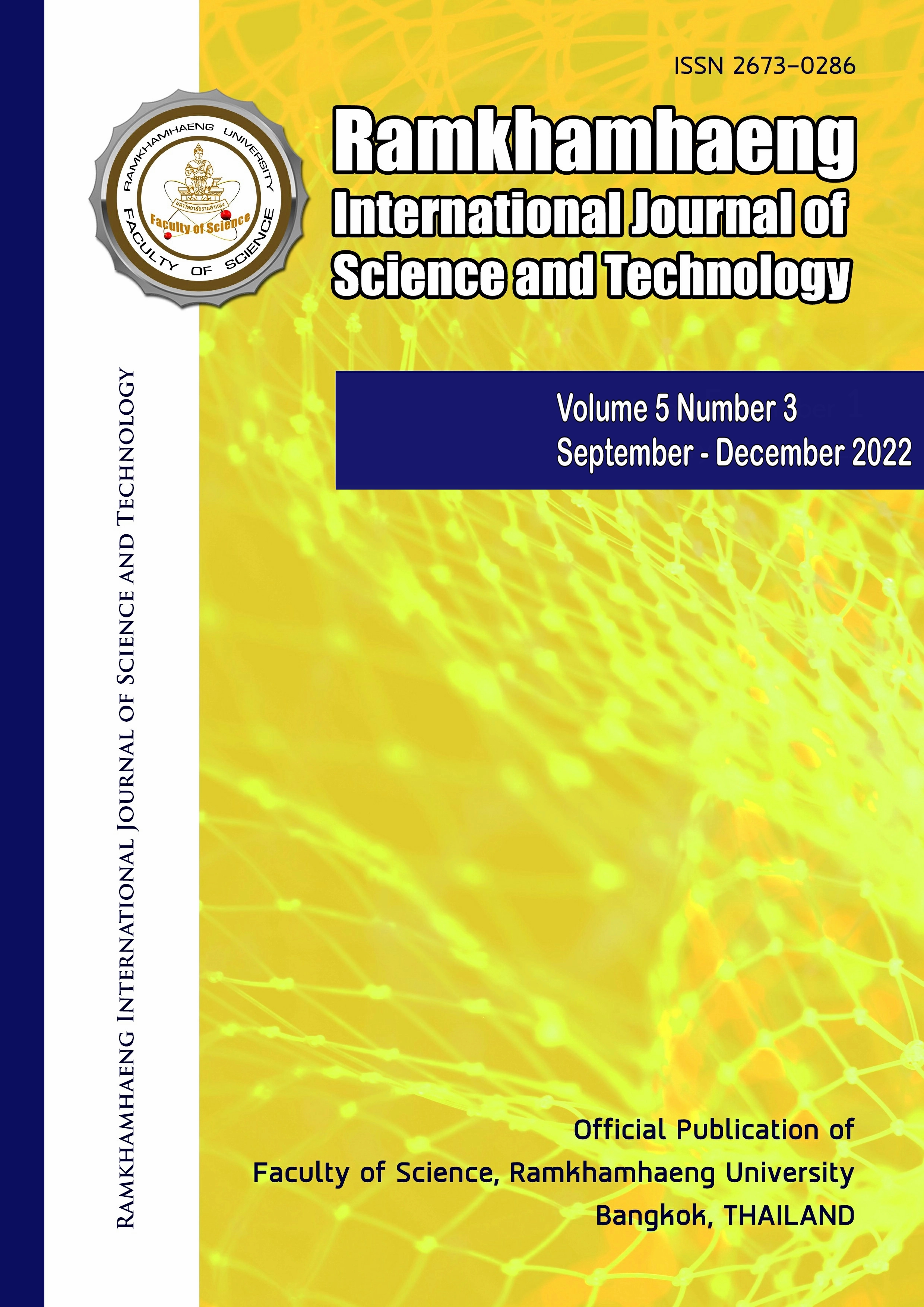Assessing coral reef fish biomass at Ko Khai Nok, Phang-nga Province
Keywords:
Biomass, Coral reef fish, Monitoring, EstimatingAbstract
Estimates of reef fish biomass are reliable indicators of fish and ecosystem health, which are essential for evaluating reef status and crucial for setting management targets. Fish biomass is a primary driver of coral reef ecosystem services and has a high sensitivity to anthropogenic disturbances. This study aimed to estimate reef fish biomass at Koh Khai Nok, Phang Nga Province using underwater fish visual census (UVC), a rapid and cost-effective method for monitoring fish communities. The target fish groups, ie; Mullidae, Carangidae, Siganidae, Kyphosidae, Lutjanidae, Nemipteridae, Scaridae, and Serranidae were selected as representatives for estimating the reef fish biomass. Fish size and abundance were estimated along four replicates of 30x2 m transects. Length estimates from each species were converted to weights using species-specific length-weight relationships in FishBase (Froese and Pauly, 2017) and summed to provide a biomass estimate for each transect. A total of 119 species representing 29 families were observed, of which 99 species from 26 families were found in the reef flat while in the reef slope, 99 species from 24 families were found. The biomass of the deep zone estimates was 7001.24 kg/Ha, which was significantly greater than the shallow zone (526.78 kg/Ha). Moreover, the biomass of carnivorous fish in the shallow zone was higher than that in the deep zone. In contrast, the biomass of herbivorous fish in the deep zone was higher than that in the shallow zone. Our results suggest that assessing coral reef fish biomass is very important for monitoring changes in coral reef ecosystem.
References
Brandl, S. J., Goatley, C. H., Bellwood, D. R., & Tornabene, L. (2018). The hidden half: ecology and evolution of cryptobenthic fishes on coral reefs. Biological Reviews, 93(4), 1846-1873.
Eschmeyer, W. N., Fricke, R., Fong, J. D., & Polack, D. A. (2010). Marine fish diversity: history of knowledge and discovery (Pisces). Zootaxa, 2525(1), 19-50.
Froese R., Pauly D. (Eds.), 2017. FishBase. World Wide Web electronic publication. Retrieved from www.fishbase.org (accessed on 17 April 2017).
Jeewarongkakul, J., Plathong, S., & Songploy, S. (2006). Diversity of reef fish in Had Kanom-Mu Koh Thale Tai National Park, Nakhon Si Thammarat.
Keawsang, R., Worachananant, P., Worachananant, S., & Panchaiyapoom, P. (2015). Species diversity of fish at HTMS Phrathong and adjacent area, Phang Nga province. In Proceedings of 53rd Kasetsart University Annual Conference, 3-6 February 2015, Kasetsart University, Thailand. Smart Agriculture" The Future of Thailand". Plants, Animals, Veterinary Medicine, Fisheries, Agricultural Extension and Home Economics (pp. 1126-1133). Kasetsart University.
Kulbicki, M., Guillemot, N., & Amand, M. (2005). A general approach to length-weight relationships for New Caledonian lagoon fishes. Cybium, 29(3), 235-252.
Lieske, E., & Myers, R. (2002). Coral reef fishes: dynamics and diversity in a complex ecosystem. Academic Press.
Manthachitra, V., & Cheevaporn, V. (2007). Reef fish and coral assemblages at Maptaput, Rayong Province. Songklanakarin J. Sci. Technol, 29(4), 907-918.
McCann, K. S. (2000). The diversity–stability debate. Nature, 405(6783), 228-233.
McClanahan, T. R., & Kaunda‐Arara, B. (1996). Fishery recovery in a coral‐reef marine park and its effect on the adjacent fishery. Conservation Biology, 10(4), 1187-1199.
McClanahan, T. R., Schroeder, R. E., Friedlander, A. M., Vigliola, L., Wantiez, L., Caselle, J. E., ... & Cinner, J. E. (2019). Global baselines and benchmarks for fish biomass: comparing remote reefs and fisheries closures. Marine Ecology Progress Series, 612, 167-192.
Meenapha, A., Tangkrock-olan, N., Noiraksar, T., & Manthachitra, V. (2017). The relationships between coral reef fish and the status of coral reefs at Samaesarn islands, Chon Buri province. In 55. Kasetsart University Annual Conference, Bangkok (Thailand), 31 Jan-3 Feb 2017.
Noonsang, P., Tina, F. W., Jaroensutasinee, M., Jaroensutasinee, K., Chumkiew, S., & Kuhapong, U. (2016). Diversity of coral reef fishes at Racha Yai Island, Thailand. Journal of Fisheries and Environment, 40(3), 19-34.
OECD, F. (2022). OECD-FAO Agricultural Outlook 2022-2031.
Ravi, V., & Venkatesh, B. (2008). Rapidly evolving fish genomes and teleost diversity. Current opinion in genetics & development, 18(6), 544-550.
Satapoomin, U. (2000). A preliminary checklist of coral reef fishes of the Gulf of Thailand, South China Sea. Raffles Bulletin of Zoology, 48(1), 31-54.
Satapoomin, U. (2011). The fishes of southwestern Thailand, the Andaman Sea-a review of research and a provisional checklist of species. Phuket Marine Biological Center Research Bulletin, 70, 29-77.
Schulze, E. D., & Mooney, H. A. (Eds.). (2012). Biodiversity and ecosystem function. Springer Science & Business Media.
SONGPLOY, S., HEMACHANDRA, W., CHAVANICH, S., & VIYAKARN, V. (2013). Fish assemblages in coral communities at Chao Lao Beach, Chanthaburi Province, Thailand. Galaxea, Journal of Coral Reef Studies, 15(Supplement), 189-194.
VILASRI, V., YAMANAKA, T., TOCHINO, S., KAWAI, T., RATMUANGKHWANG, S., & IMAMURA, H. (2015). Annotated checklist of marine fishes from Phuket and Ranong, Thailand. Tropical Natural History, 15(1), 55-68.
Vitousek, P. M., Aber, J. D., Howarth, R. W., Likens, G. E., Matson, P. A., Schindler, D. W., ... & Tilman, D. G. (1997). Human alteration of the global nitrogen cycle: sources and consequences. Ecological applications, 7(3), 737-750.
Downloads
Published
Issue
Section
License
Copyright (c) 2022 Ramkhamhaeng International Journal of Science and Technology

This work is licensed under a Creative Commons Attribution-NonCommercial-NoDerivatives 4.0 International License.
Copyright Notice: a copyright on any article in the published journal is retained by the Ramkhamhaeng International Journal of Science and Technology. Readers or Users grant the right to use of the Article contained in the Content in accordance with the Creative Commons CC BY-NC-ND license and the Data contained in the Content in accordance with the Creative Commons CC BY-NC-ND.



